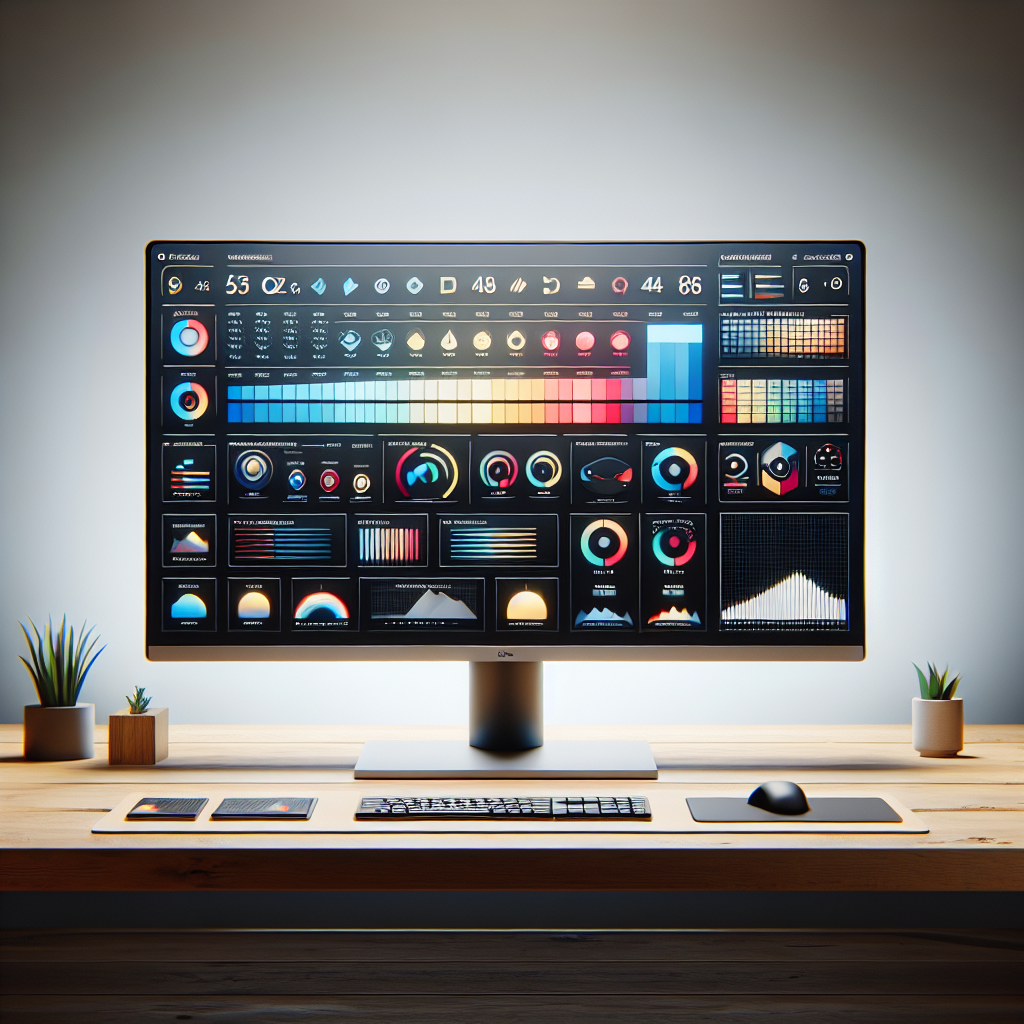Aspect ratio plays a crucial role in the usability and overall performance of an LCD monitor. Understanding this characteristic helps consumers and professionals make informed decisions that align with their needs, whether for gaming, professional work, or everyday use. Aspect ratios have evolved over time, accommodating various technological advancements and user preferences.
Understanding Aspect Ratio
The aspect ratio of a display refers to the proportional relationship between its width and height. It is typically represented as two numbers separated by a colon, such as 16:9 or 4:3. These ratios signify the number of horizontal pixels to vertical pixels, which in turn influences the viewing experience.
| Aspect Ratio | Width | Height | Use Case |
|---|---|---|---|
| 4:3 | 4 | 3 | Legacy Systems and Retro Gaming |
| 16:9 | 16 | 9 | Modern Video Content and Gaming |
| 21:9 | 21 | 9 | Ultrawide Monitors for Multitasking |
Common Aspect Ratios and Their Applications
4:3 Aspect Ratio
This traditional aspect ratio was prevalent in older CRT monitors and early LCDs. It provides a more squared viewing area, which is less suited for modern media but remains useful for legacy applications and retro gaming. Professionals working with older software might find this aspect ratio beneficial.
16:9 Aspect Ratio
Dubbed the universal aspect ratio, 16:9 is the most commonly used for a wide range of applications, including gaming, movies, and productivity software. It offers a balanced, wide viewing experience that accommodates current media formats. The popularity of HD and Full HD screens has cemented 16:9 as the standard ratio for most work and entertainment purposes.
21:9 Aspect Ratio
Targeted at multitaskers and gamers looking for an immersive experience, the 21:9 aspect ratio provides a wider field of view. It is excellent for professional environments where multiple applications are open simultaneously, effectively reducing the need for multi-monitor setups. For gamers, the ultrawide aspect adds depth to the immersive experience, especially in racing and simulation games.
The Impact of Aspect Ratios on Productivity
Using monitors with different aspect ratios can significantly affect productivity. For example, a 16:9 monitor is perfect for general productivity and media consumption, while a 21:9 monitor excels in multitasking environments. The wider format of a 21:9 monitor allows users to have multiple windows open side by side, enhancing workflow and efficiency.
Multiple Document Handling
A 21:9 monitor simplifies the process of handling multiple documents or applications simultaneously. This capability is especially beneficial in professions such as programming, digital marketing, and financial analysis, where cross-referencing data from various sources is frequent.
The Effect on Gaming
Aspect ratio also greatly affects gaming experiences. Modern games often support ultrawide 21:9 formats, providing gamers with a more immersive and engaging environment. Gamers who invest in 21:9 monitors find the additional screen real estate advantageous for peripheral vision, which can be crucial in first-person shooters and racing games.
Competitive Edge
For competitive gaming, the field of view offered by a 21:9 monitor can be a game-changer. It enables players to spot opponents and obstacles outside the view range of a traditional 16:9 monitor, giving them a strategic advantage.
Media and Entertainment
When it comes to media consumption, the aspect ratio of a monitor can enhance or detract from the viewing experience. A 21:9 aspect ratio provides a cinematic feel, mimicking the aspect ratios used in theaters and thus making it ideal for watching movies.
Video Editing
For video editors, an ultrawide aspect ratio (21:9) is extremely useful, as it allows them to navigate through long timelines and have multiple editing tools open simultaneously without feeling cramped. This setup enhances productivity and workflow efficiency.
Considerations for Purchase
When purchasing an LCD monitor, consider the intended use. While a 16:9 monitor provides versatile, all-round usability, a 4:3 aspect ratio might be more relevant for specific, niche applications. On the other hand, a 21:9 monitor would be ideal for those seeking a more advanced setup, especially in multitasking and immersive experiences.
It is also important to consider compatibility and support. While most modern media and games support 16:9 and 21:9 aspect ratios, legacy software and systems might not, necessitating some adjustments.
Conclusion
The aspect ratio of an LCD monitor significantly influences its usability across various applications. From productivity and gaming to media consumption and professional tasks, choosing the right aspect ratio can enhance the overall experience and efficiency. Understanding the strengths and limitations of different aspect ratios allows consumers to make informed decisions tailoring their monitor choices to their specific needs.

